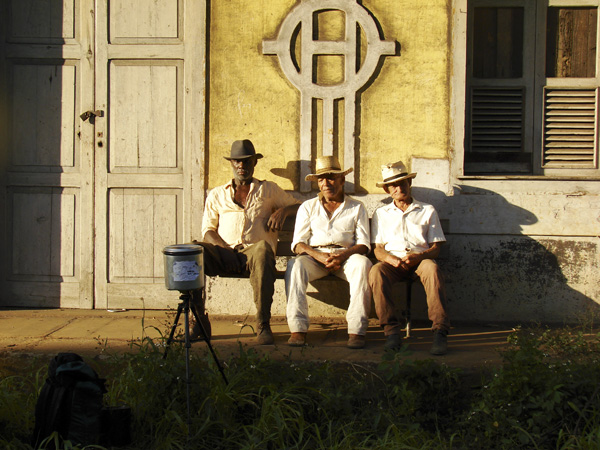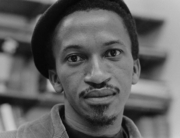Although magic realism is famously known in Latin American literature through classic works by Jorge Luis Borges and Gabriel Garcia Márquez, in films it’s mainly associated
with pretty but empty adaptations of novels like Like Water for Chocolate or The House of the Spirits. In Found Memories, director Julia Murat impressively—and unself-consciously—uses magic realism without condescending to her characters or their story.
Set in a small, remote Brazilian village, the movie begins straightforwardly by showing the everyday rituals of a group of elderly people whom we gradually come to know, led by Madalena (Sonia Guedes), who wakes up early each morning to bake bread, which she then walks over to the coffee shop of Antonio (Luiz Serra). The two have an amusing and relaxed rapport, always getting on each other’s nerves but never remaining angry with each other for very long. They sit outside the shop and have a cup of coffee. Then Madalena returns home and writes letters to her long-dead husband by kerosene light.
For awhile, Murat detachedly records the ordinary lives of Madalena, Antonio, and the padre who leads the pious villagers in prayer at Mass—the church bells ringing are a large part of
the cycle of life here—subtly changing the camera angles and editing the daily scenes slightly, which both gives a sense of the unhurried pace of this place and avoids dramatic monotony.
Into this ordered world arrives Rita (Lisa E. Fávero), a much younger woman who’s also a photographer (the parallels to Murat as chronicler of these lives are there, but never made overly obvious). She becomes Madalena’s boarder and slowly discovers—for her benefit as well as ours—the strangeness of this village and its inhabitants, which centers around the cemetery that has been long closed and locked, and to which Madalena makes a daily pilgrimage to sit outside its closed iron gates. There’s also a list on the church wall of the locals who are deceased, from decades past but not recently. When Rita questions Antonio about it, he says simply: “We forget to die around here.” That line encapsulates the movie’s themes succinctly, yet Murat smartly doesn’t linger on it, cutting to the next scene.
Found Memories artfully mixes magic realism with documentary realism, grounding the story’s fanciful aspects in natural goings-on. By taking these people at face value, Rita ingratiates herself despite how different she is from them. There’s a telling scene of her dancing in the dark with earphones to a loud, garage-rock tune, and one of the villagers suddenly enters the frame, momentarily startling her—and us. But there’s no danger: it was the person she was waiting for to have a drink with, and things continue uneventfully.
Murat beautifully balances her two realisms with great assistance from her superb editor Marina Meliande and her equally fine cinematographer Lucio Bonelli, whose painterly Cinemascope compositions blend documentary and magic effortlessly: the black-and-white montages of Rita’s photographs are realistic and otherworldly at the same time, a ghostly effect underlined by Lucas Marcier’s haunting music. Murat has made an assured feature debut that deals with life, death, and eternity that makes us anxious to see what she’ll do next.







Leave A Comment